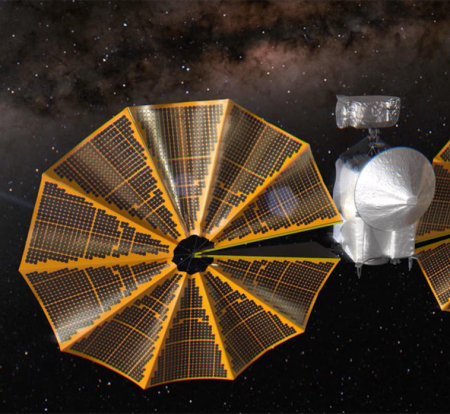More delays for Blue Origin’s BE-4 rocket engine
Capitalism in space: According to a report yesterday at Ars Technica, more delays are expected in the delivery of Blue Origin’s BE-4 rocket engine to ULA, possibly preventing the first launch of Vulcan from occurring in ’22.
Testing suggests the engine itself is functioning well. However:
Blue Origin is unlikely to deliver two flight-ready versions of the BE-4 rocket engine to United Launch Alliance (ULA) before at least the second quarter of 2022, two sources say. This increases the possibility that the debut flight of ULA’s much-anticipated new rocket, Vulcan, could slip into 2023.
Vulcan’s first stage is powered by two BE-4 engines, which burn methane and are more powerful than the space shuttle’s main engines. The sources said there recently was a “relatively small” production issue with fabrication of the flight engines at Blue Origin’s factory in Kent, Washington. [emphasis mine]
Translation of the highlighted words: We have built the engine, it is working great, but we have suddenly discovered we haven’t figured out the mass production process for building it quickly and in large numbers so as to support numerous launches by both ULA’s Vulcan and Blue Origin’s New Glenn rockets.
ULA claims it can get Vulcan off the ground only a few months after getting those flightworthy BE-4 engines because it has done most of the design work using the dummy “pathfinder” BE-4 engines Blue Origin provided last year. Don’t believe it. The company is going to have to install working engines on Vulcan, and then do static fire tests to validate not only the rocket but its entire launch process. Such testing usually takes months, and is rarely completed in less than half a year, even by SpaceX.
These problems at Blue Origin means that both Vulcan and New Glenn will likely launch more three years behind schedule. Instead of 2020, both will fly no earlier than 2023, at best.
Capitalism in space: According to a report yesterday at Ars Technica, more delays are expected in the delivery of Blue Origin’s BE-4 rocket engine to ULA, possibly preventing the first launch of Vulcan from occurring in ’22.
Testing suggests the engine itself is functioning well. However:
Blue Origin is unlikely to deliver two flight-ready versions of the BE-4 rocket engine to United Launch Alliance (ULA) before at least the second quarter of 2022, two sources say. This increases the possibility that the debut flight of ULA’s much-anticipated new rocket, Vulcan, could slip into 2023.
Vulcan’s first stage is powered by two BE-4 engines, which burn methane and are more powerful than the space shuttle’s main engines. The sources said there recently was a “relatively small” production issue with fabrication of the flight engines at Blue Origin’s factory in Kent, Washington. [emphasis mine]
Translation of the highlighted words: We have built the engine, it is working great, but we have suddenly discovered we haven’t figured out the mass production process for building it quickly and in large numbers so as to support numerous launches by both ULA’s Vulcan and Blue Origin’s New Glenn rockets.
ULA claims it can get Vulcan off the ground only a few months after getting those flightworthy BE-4 engines because it has done most of the design work using the dummy “pathfinder” BE-4 engines Blue Origin provided last year. Don’t believe it. The company is going to have to install working engines on Vulcan, and then do static fire tests to validate not only the rocket but its entire launch process. Such testing usually takes months, and is rarely completed in less than half a year, even by SpaceX.
These problems at Blue Origin means that both Vulcan and New Glenn will likely launch more three years behind schedule. Instead of 2020, both will fly no earlier than 2023, at best.







